Abstract
1. Pressure fluctuations and lymph flow were measured in metatarsal lymphatics in anaesthetized sheep. 2. Intermittent compression significantly increased lymph flow when this was applied over the hoof but did not increase flow significantly when applied over the metatarsal region. 3. In a second preparation a 15 cm length of metatarsal lymphatic was cannulated at both ends and measurements were made of the ability of the duct to pump saline from an inflow reservoir through an outflow at the same height. 4. In the absence of external forces fluid was propelled by the lymphatic's intrinsic contractions but when intermittent compression was applied over the metatarsal region flow increased almost fourfold. 5. When animals with the doubly cannulated duct were allowed to recover, the effect of normal limb movements on fluid propulsion was examined. Under these conditions flow only occurred in response to intrinsic lymphatic contractions and appeared to be unaffected by the animal moving round the cage. 6. These results suggest that the effects of external forces on lymph flow are more dependent on compression of tissues in the lymphatic drainage area than on compression of the main lymphatic ducts. External compression can increase fluid propulsion by these vessels but, since forces of adequate magnitude appear not to be encountered in normal hind-limb movements, lymph propulsion in this region must depend on intrinsic lymphatic pumping.
Full text
PDF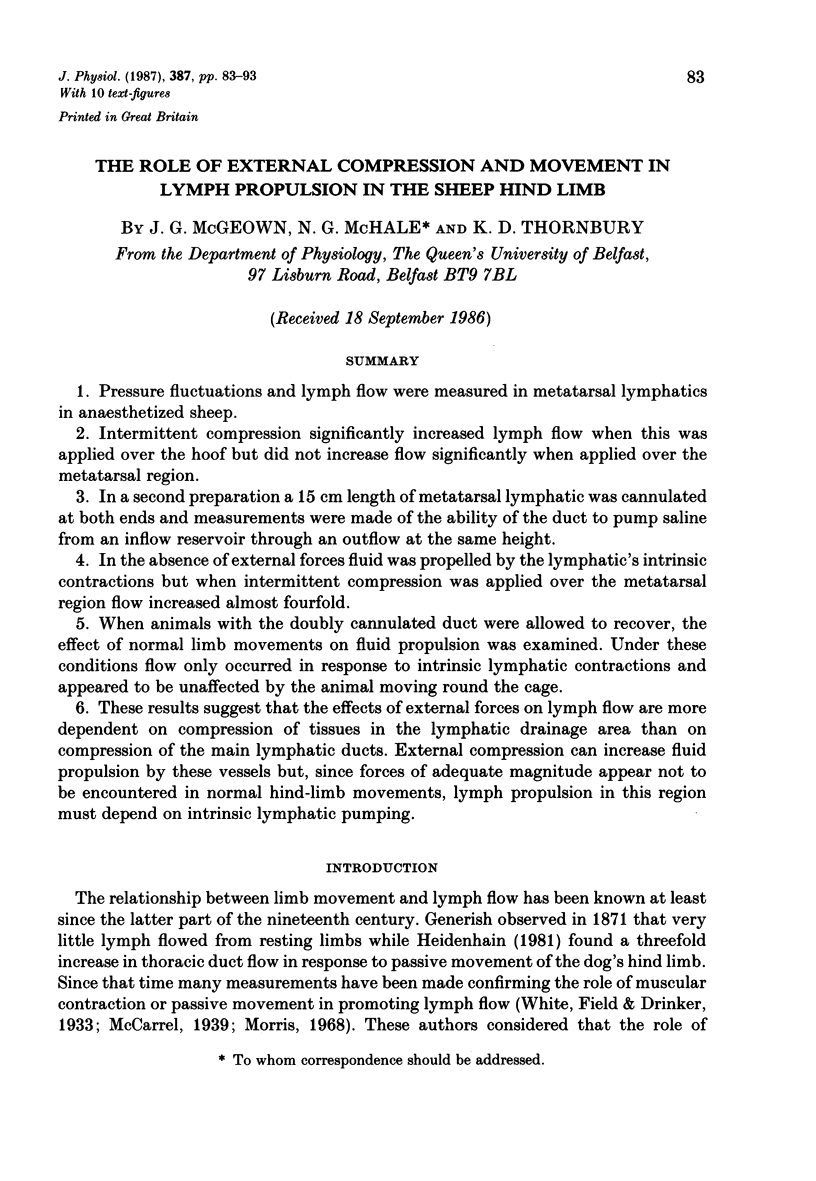
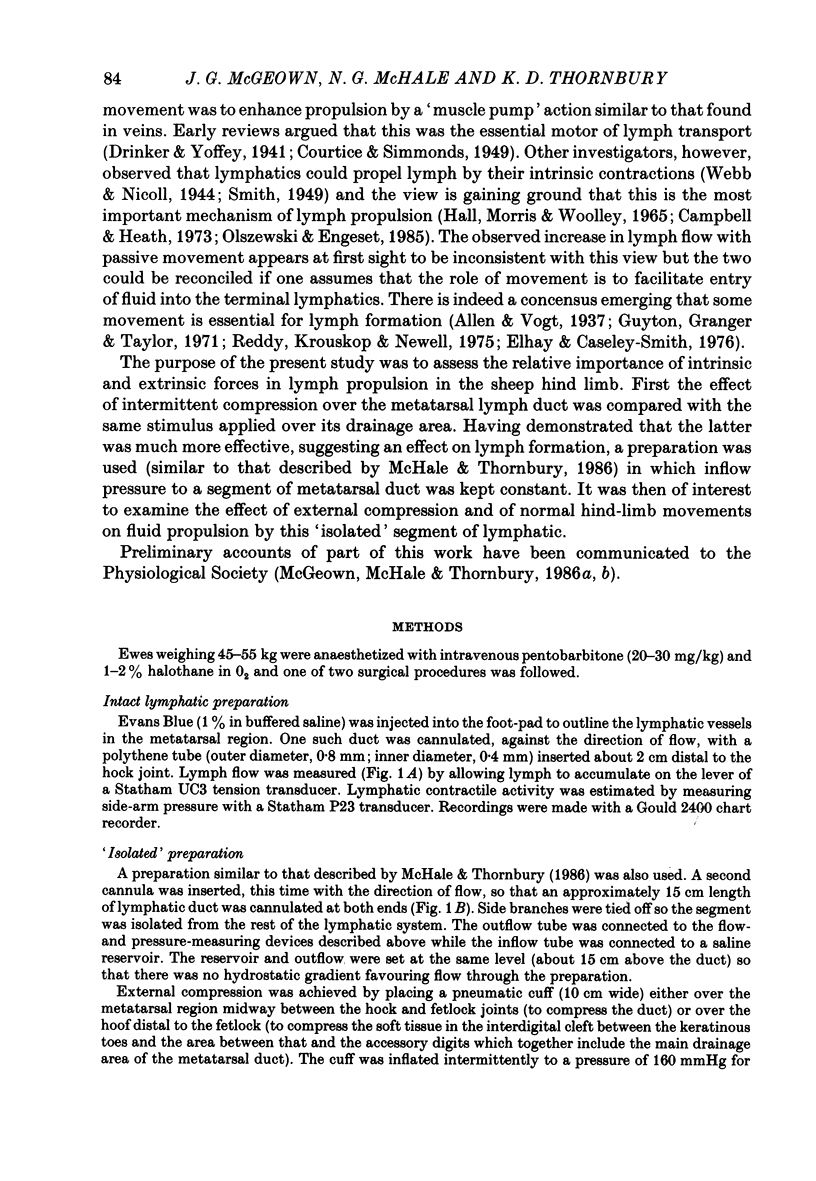
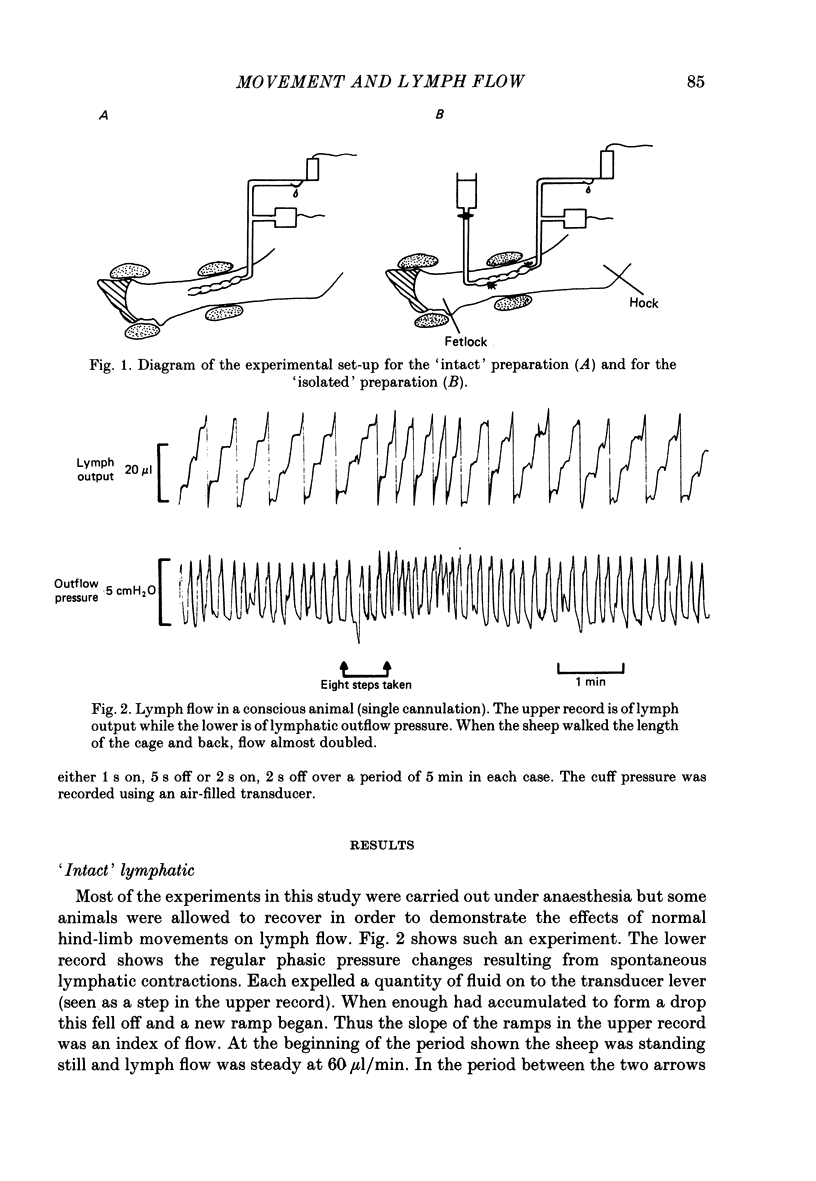
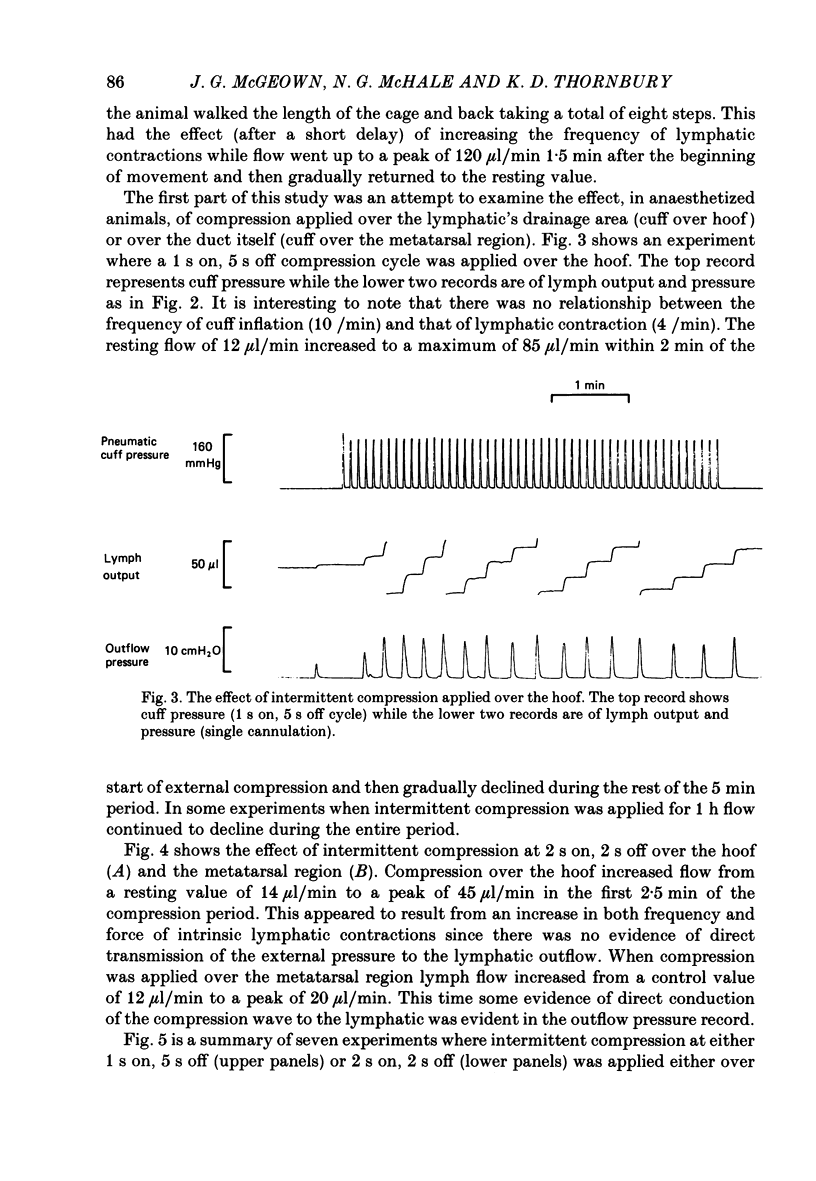
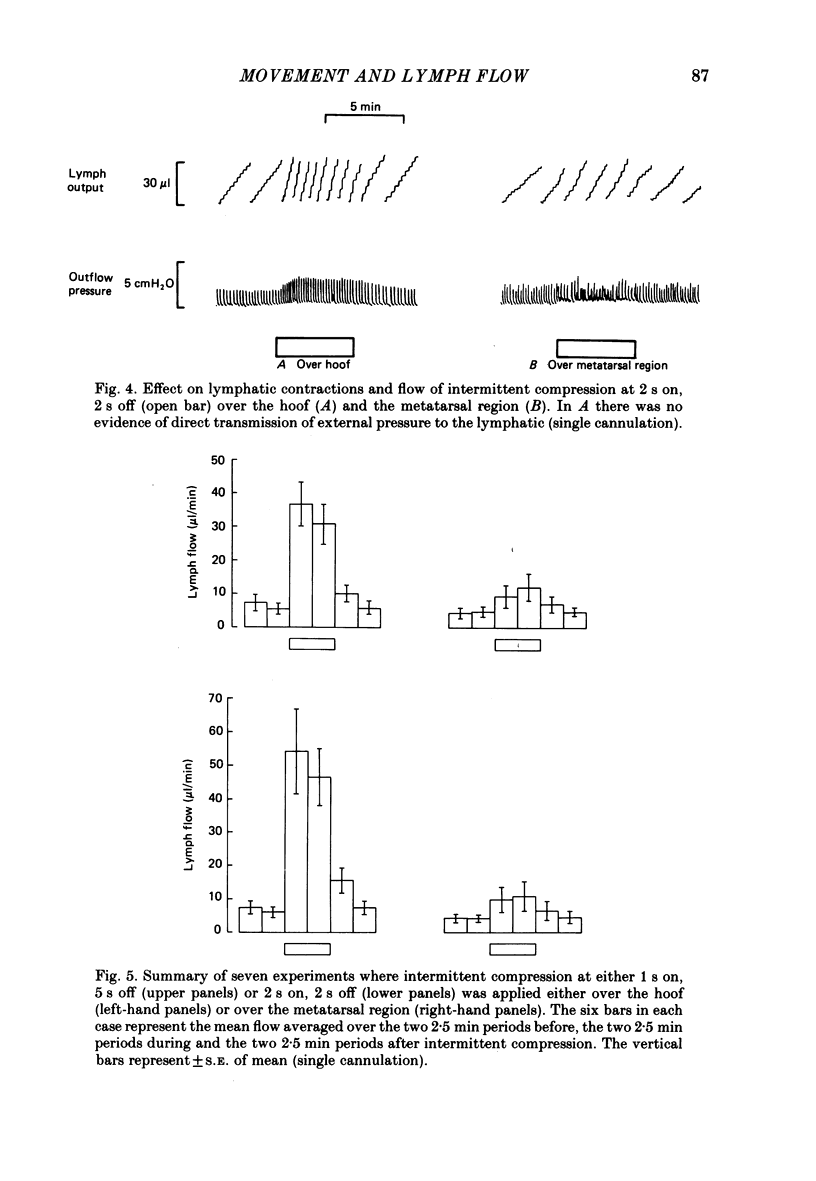
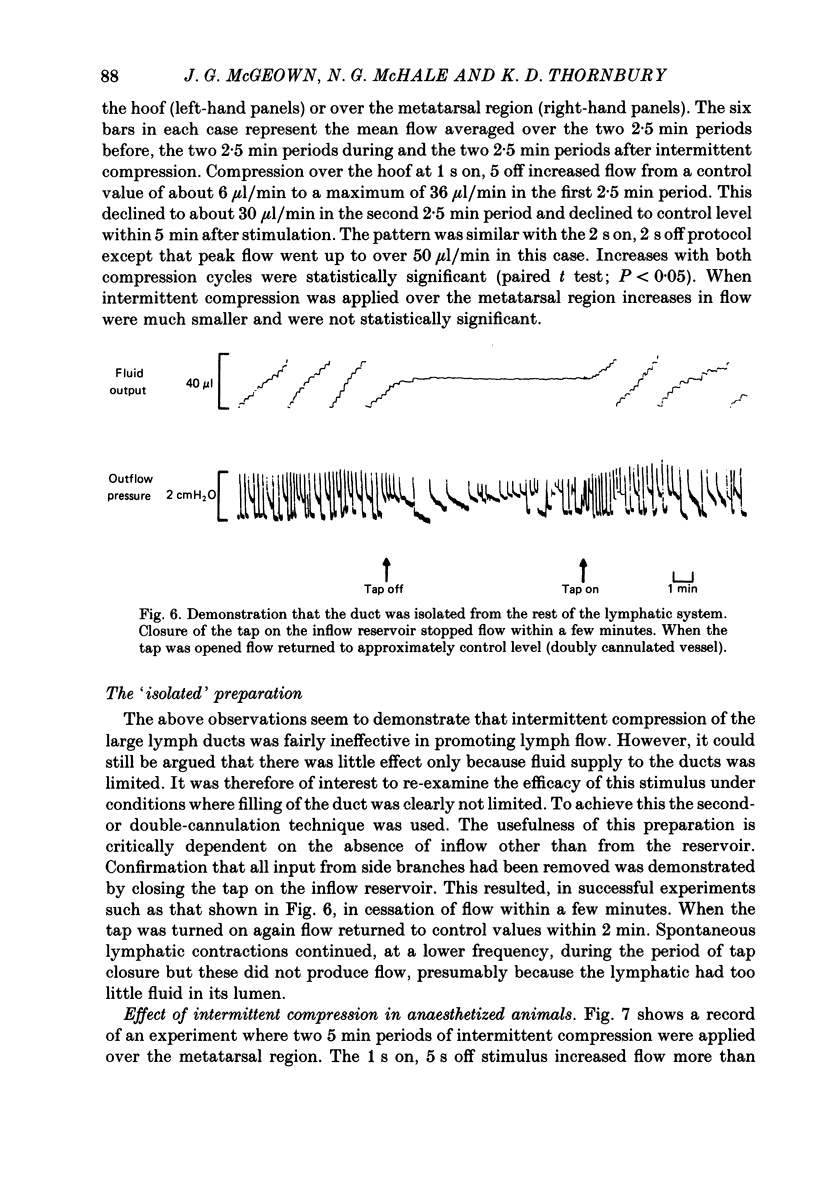
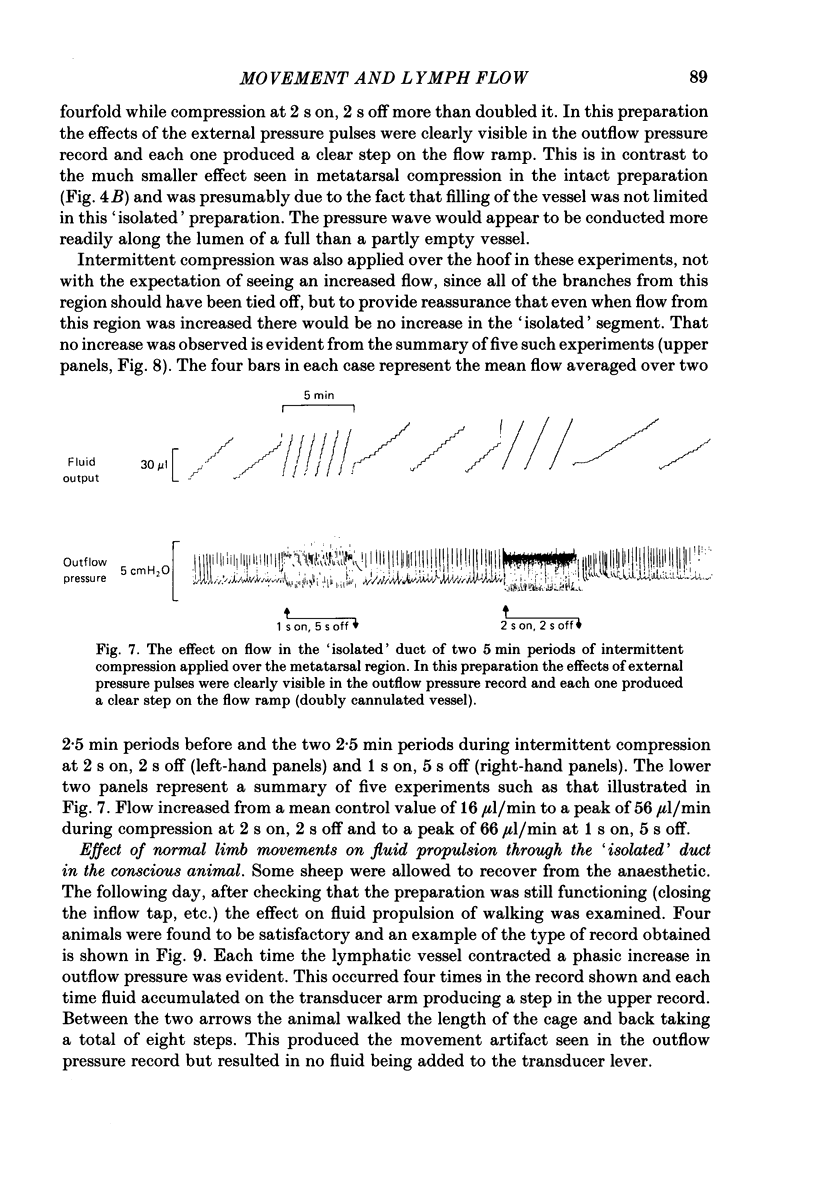
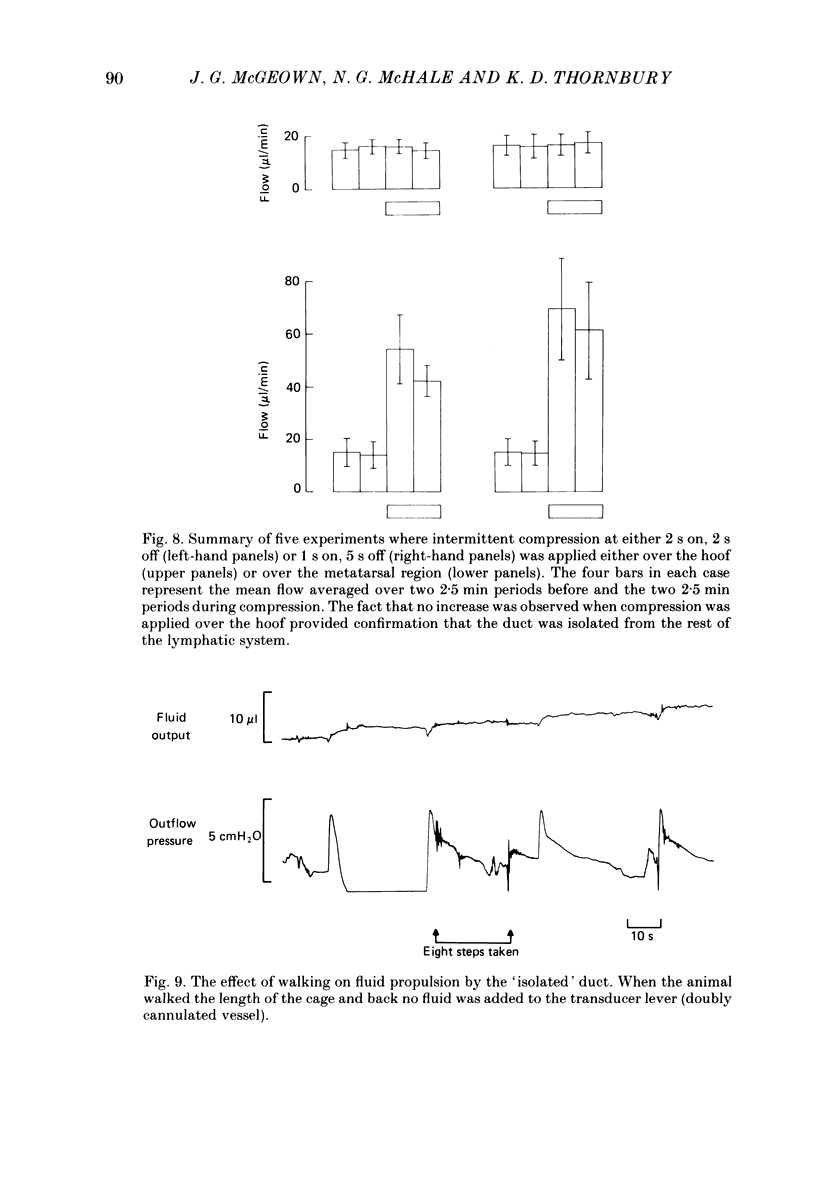



Selected References
These references are in PubMed. This may not be the complete list of references from this article.
- COURTICE F. C., SIMMONDS W. J. Absorption of fluids from the pleural cavities of rabbits and cats. J Physiol. 1949 Aug;109(1-2):117–130. doi: 10.1113/jphysiol.1949.sp004375. [DOI] [PMC free article] [PubMed] [Google Scholar]
- Calnan J. S., Pflug J. J., Reis N. D., Taylor L. M. Lymphatic pressures and the flow of lymph. Br J Plast Surg. 1970 Oct;23(4):305–317. doi: 10.1016/s0007-1226(70)80066-2. [DOI] [PubMed] [Google Scholar]
- Campbell T., Heath T. Intrinsic contractility of lymphatics in sheep and in dogs. Q J Exp Physiol Cogn Med Sci. 1973 Jul;58(3):207–217. doi: 10.1113/expphysiol.1973.sp002209. [DOI] [PubMed] [Google Scholar]
- Elhay S., Casley-Smith J. R. Mathematical model of the initial lymphatics. Microvasc Res. 1976 Sep;12(2):121–140. doi: 10.1016/0026-2862(76)90013-3. [DOI] [PubMed] [Google Scholar]
- Florey H. Observations on the contractility of lacteals: Part II. J Physiol. 1927 Jun 7;63(1):1–18. doi: 10.1113/jphysiol.1927.sp002375. [DOI] [PMC free article] [PubMed] [Google Scholar]
- Gerber J. G., Nies A. S. Renal vasoconstrictor response to hypertonic saline in the dog: effects of prostaglandins, indomethacin and theophylline. J Physiol. 1986 Nov;380:35–43. doi: 10.1113/jphysiol.1986.sp016270. [DOI] [PMC free article] [PubMed] [Google Scholar]
- Guyton A. C., Granger H. J., Taylor A. E. Interstitial fluid pressure. Physiol Rev. 1971 Jul;51(3):527–563. doi: 10.1152/physrev.1971.51.3.527. [DOI] [PubMed] [Google Scholar]
- Hall J. G., Morris B., Woolley G. Intrinsic rhythmic propulsion of lymph in the unanaesthetized sheep. J Physiol. 1965 Sep;180(2):336–349. doi: 10.1113/jphysiol.1965.sp007706. [DOI] [PMC free article] [PubMed] [Google Scholar]
- McHale N. G., Thornbury K. A method for studying lymphatic pumping activity in conscious and anaesthetized sheep. J Physiol. 1986 Sep;378:109–118. doi: 10.1113/jphysiol.1986.sp016210. [DOI] [PMC free article] [PubMed] [Google Scholar]
- Reddy N. P., Krouskop T. A., Newell P. H., Jr A note on the mechanisms of lymph flow through the terminal lymphatics. Microvasc Res. 1975 Sep;10(2):214–216. doi: 10.1016/0026-2862(75)90008-4. [DOI] [PubMed] [Google Scholar]
- Skalak T. C., Schmid-Schönbein G. W., Zweifach B. W. New morphological evidence for a mechanism of lymph formation in skeletal muscle. Microvasc Res. 1984 Jul;28(1):95–112. doi: 10.1016/0026-2862(84)90032-3. [DOI] [PubMed] [Google Scholar]


